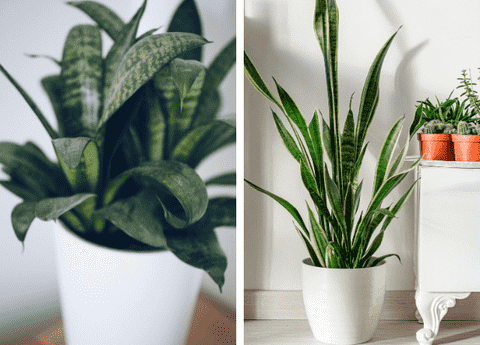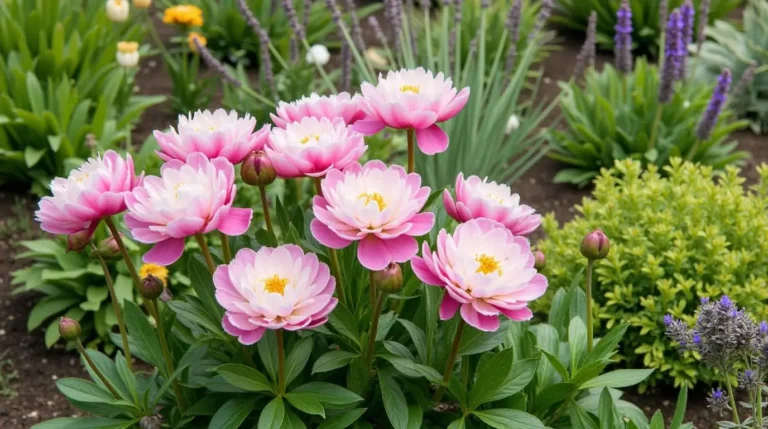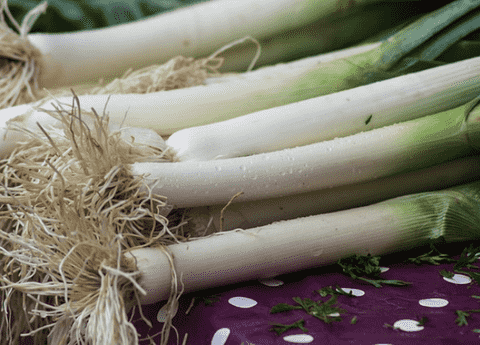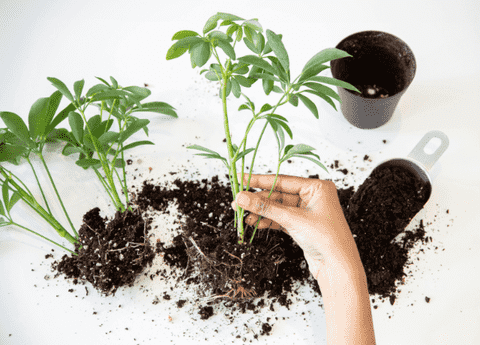Guide for How to Grow and Care for Snake Plant (Sansevieria trifasciata)
Table of Contents
Snake plants, also known as Sansevieria trifasciata or mother-in-law’s tongue, are popular houseplants celebrated for their striking appearance and resilience. With their tall, sword-like leaves and low-maintenance nature, they make an excellent choice for both novice and seasoned plant enthusiasts. In this ultimate guide, we will delve into the essential steps for growing and caring for your snake plant, ensuring it thrives in your home environment. From selecting the right potting mix to mastering watering techniques, you’ll find all the information you need to keep your snake plant healthy and vibrant.
Introduction to Snake Plants

Why Choose a Snake Plant?
Snake plants are an excellent choice for a variety of reasons. First and foremost, they are incredibly hardy and can tolerate a wide range of conditions. This makes them perfect for individuals who might not have a green thumb or those who travel frequently. Snake plants are also recognized for their ability to purify the air. They can remove toxins such as formaldehyde and benzene from the air, contributing to a healthier living environment. Their unique, architectural appearance can also enhance the aesthetic appeal of any room, adding a touch of greenery and sophistication. Lastly, snake plants require minimal maintenance, making them suitable for busy lifestyles. They thrive in both low and bright light conditions, and they don’t need frequent watering. With all these benefits, it’s easy to see why snake plants are a popular choice for homes and offices alike.
Types of Snake Plants
There are several varieties of snake plants, each offering its unique charm. The most common type is the Sansevieria trifasciata ‘Laurentii’, recognizable by its tall, green leaves with yellow edges. Another popular variety is the Sansevieria trifasciata ‘Zeylanica’, which features dark green leaves adorned with lighter, horizontal stripes. For those seeking a more compact option, the Sansevieria ‘Hahnii’ or Bird’s Nest Snake Plant is an excellent choice, known for its rosette-shaped arrangement of leaves. The Sansevieria cylindrica, or cylindrical snake plant, offers a distinct look with its round, stiff leaves that can be braided for decorative purposes. Lastly, the Sansevieria ‘Moonshine’ is admired for its silvery, pale green foliage, providing a striking contrast to darker varieties. Each type brings its own aesthetic and can be selected based on personal preference and space requirements.
Benefits of Snake Plants
Snake plants offer numerous benefits beyond their aesthetic appeal. One of the most notable advantages is their ability to improve indoor air quality. These plants are known for their air-purifying properties, as they can absorb toxins such as formaldehyde, xylene, and toluene. This helps to create a healthier living environment by reducing indoor pollutants. Additionally, snake plants release oxygen at night, making them a great addition to bedrooms for improved air quality and better sleep. Another benefit is their low-maintenance nature, which makes them ideal for busy individuals or those new to plant care. They are drought-tolerant and can thrive in various light conditions, from low light to bright, indirect light. Moreover, snake plants can contribute to reducing stress and enhancing mood, as the presence of greenery has been shown to have a calming effect. With these benefits, snake plants are a valuable addition to any home or office.
Growing Your Snake Plant

Ideal Soil and Containers
Selecting the right soil and container is crucial for the health of your snake plant. Snake plants thrive in well-draining soil to prevent root rot, which can be a common issue with these plants. A cactus or succulent potting mix is often recommended due to its excellent drainage properties. You can also create your own mix by combining regular potting soil with sand or perlite to enhance drainage.
When it comes to containers, choose one with drainage holes to allow excess water to escape. It maintains the focus on drainage holes, preventing water pooling and root rot, and highlights the benefits of terra cotta pots for air circulation around the roots. However, any container with adequate drainage will suffice. Make sure the pot is not too large, as snake plants prefer to be slightly root-bound. This encourages healthy growth and prevents overwatering.
Watering Techniques
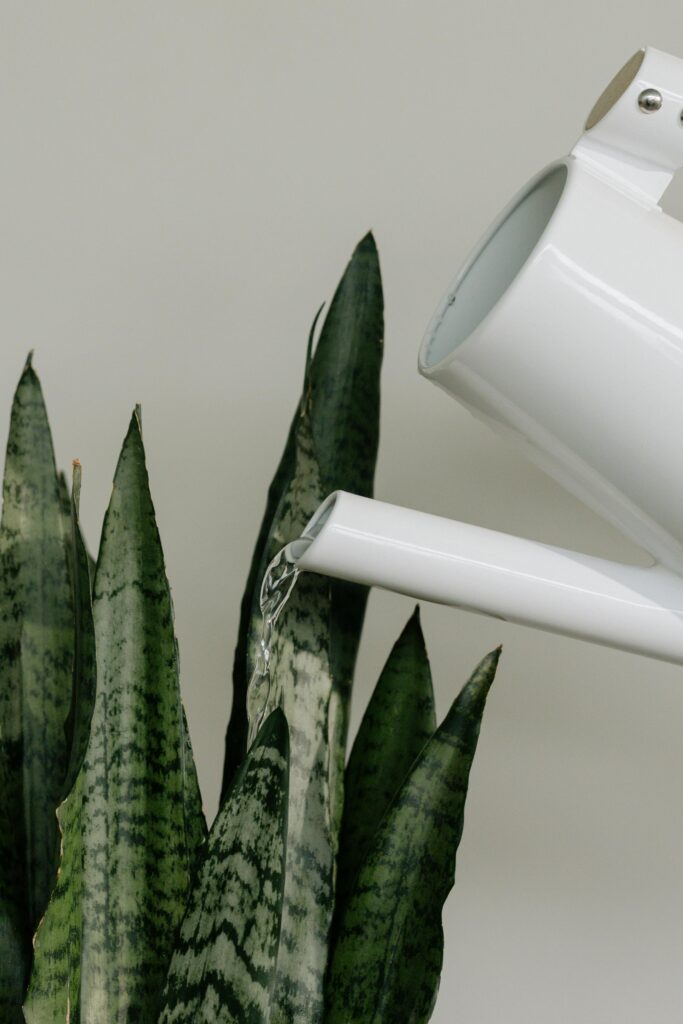
Proper watering is key to the health of your snake plant. These plants thrive in dry conditions and prefer their soil to dry out between waterings. Excessive watering is a frequent error that can cause root rot. The best practice is to water your snake plant thoroughly and then allow the soil to dry out completely before watering again.
During the growing season, which typically spans spring and summer, you may need to water your snake plant every 2-3 weeks. In the dormant winter months, reduce watering to once a month or even less. Always check the moisture level of the soil before watering; inserting your finger about an inch into the soil can help you gauge whether it’s time to water.
Additionally, avoid getting water on the leaves, as this can lead to mold or fungal issues. Water at the base of the plant and ensure that excess water can drain away easily.
Light Requirements
Snake plants are highly adaptable and can thrive in a variety of light conditions, making them incredibly versatile houseplants. While they prefer bright, indirect light, they can also tolerate low light levels. This flexibility allows you to place them in different areas of your home, from sunny windowsills to dimly lit corners.
However, to achieve optimal growth and vibrant leaf coloration, placing your snake plant in bright, indirect light is recommended. Direct sunlight can be too harsh and may cause the leaves to develop sunburn, characterized by brown or white spots. On the other hand, if kept in low light for extended periods, the plant’s growth may slow down, and the leaves could lose some of their vibrant patterns.
For best results, aim to provide your snake plant with a few hours of indirect sunlight each day. If natural light is insufficient, you might consider using artificial grow lights to provide additional illumination.
Caring for Your Snake Plant
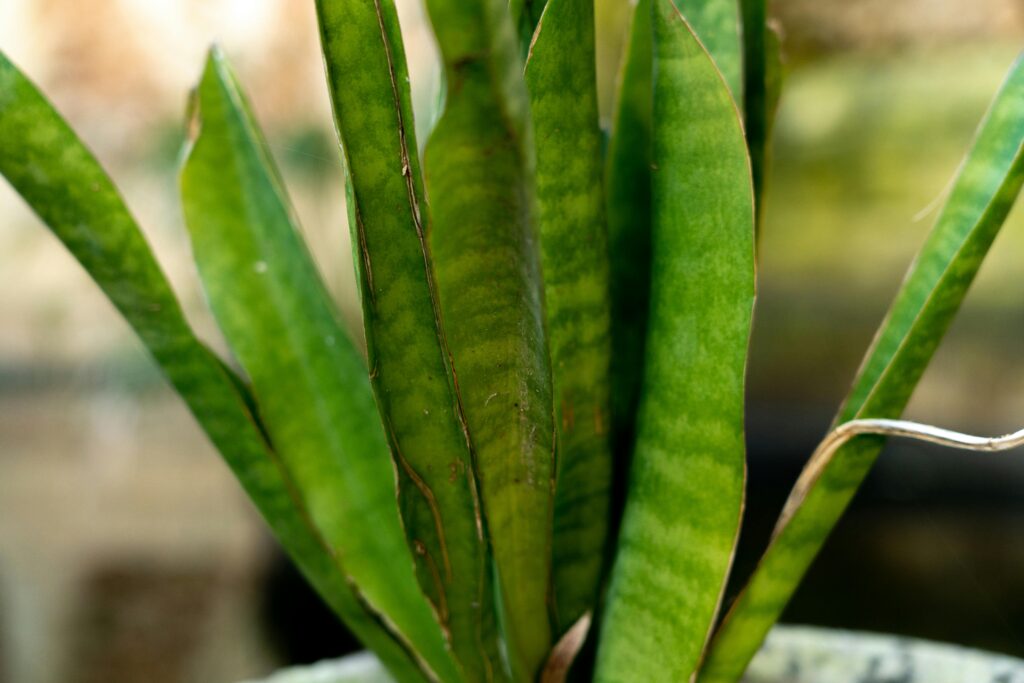
Common Pests and Problems
While snake plants are generally resilient, they can occasionally encounter pests and problems. One common issue is root rot, typically caused by overwatering. To prevent this, ensure the soil dries out completely between waterings and use a well-draining potting mix.
Pests such as spider mites, mealybugs, and scale insects can also affect snake plants. These pests can cause damage by sucking the sap from the leaves, leading to yellowing and stunted growth. Regularly inspect your plant for signs of pests, such as tiny webs, white cottony spots, or small brown bumps. If you spot any, you can treat the infestation with insecticidal soap, neem oil, or by wiping the leaves with a damp cloth.
Additionally, ensure your snake plant is not exposed to extreme temperatures or drafts, as these can cause leaf damage. By addressing these issues promptly, you can maintain the health and vitality of your snake plant.
Pruning and Repotting
Pruning and repotting are essential aspects of snake plant care that promote healthy growth and prevent overcrowding. Pruning is relatively simple and can be done to remove damaged or yellowing leaves. Using clean, sharp scissors or pruning shears, cut the leaf at its base, close to the soil line. This helps maintain the plant’s aesthetic and prevents the spread of any potential diseases.
Repotting your snake plant is necessary when it becomes root-bound, which typically occurs every 2-3 years. Signs that your plant needs repotting include roots growing out of the drainage holes or the plant outgrowing its container. To report, select a slightly larger pot with good drainage and fill it with fresh, well-draining soil. Carefully take the plant out of its existing pot, gently shake off any loose soil, and then set it in the new container. Fill in around the roots with soil, and water lightly to help the plant settle.
Regular pruning and occasional repotting will keep your snake plant thriving and looking its best.
Seasonal Care Tips
Adjusting your snake plant care routine according to the seasons is essential for its well-being. During the growing season, which includes spring and summer, your snake plant will be more active and may require more frequent watering. Make sure the soil is fully dry before watering again to prevent root rot. This is also a good time to feed your plant with a balanced, liquid houseplant fertilizer every 4-6 weeks to encourage growth.
In fall and winter, snake plants enter a dormant period. During these months, reduce watering significantly, as the plant’s water needs decrease. You might only need to water once a month or even less frequently. Avoid fertilizing during this time, as the plant’s growth slows down.
Additionally, be mindful of the indoor temperature and humidity levels during winter. Snake plants prefer temperatures above 50°F (10°C) and can suffer if exposed to cold drafts or sudden temperature drops. By adapting your care practices to the seasonal changes, you can ensure your snake plant remains healthy year-round.

